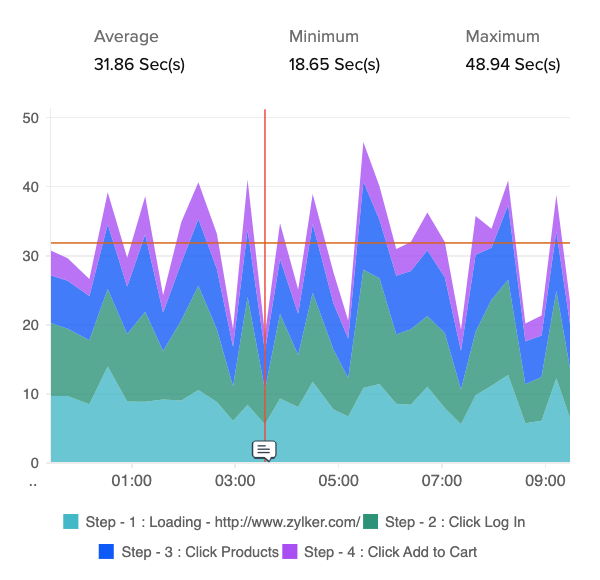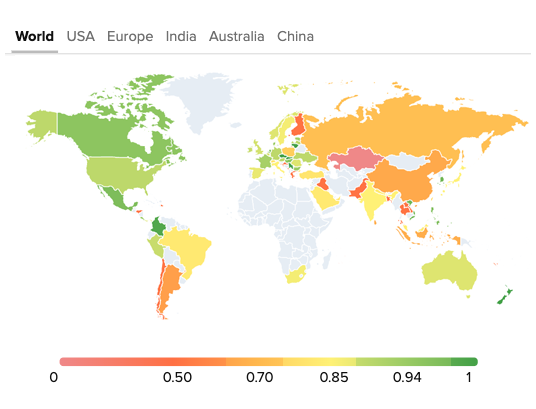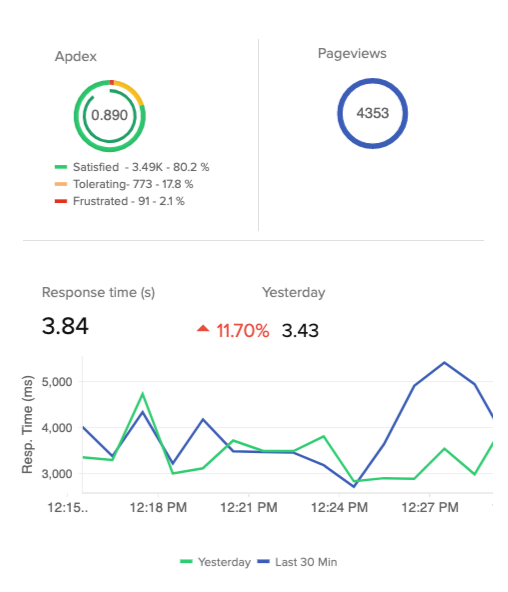Website monitoring made simple
Get website checks every 30 seconds from over 120 locations using Site24x7's website monitoring tool
Start 30-day free trial Try now, sign up in 30 seconds
Join our community of happy customers!
All you need to track for your website's uptime
Stay updated and gain deep insights
Schedule maintenances
Configure maintenance windows for preferred time slots to ensure overall uptime, avoid alert noise creation, as well as to plan your maintenance schedules in advance.
Custom dashboards
Create personalized dashboard views by bringing together diverse metrics from every tier of your infrastructure, and demonstrate an overall picture of your IT infrastructure and its business impacts.
Exhaustive reports
Generate different reports with detailed information related to your monitors to showcase and analyze the performance of your IT infrastructure, its business values, and plan for future needs.
AI
Discover regional response time degradation on your website, identify increases in connection time values to reduce delays, reduce your mean time to repair (MTTR), and identify deviations from the expected behavior.
Real-time alerts
Choose whom to be notified, how to be notified, and more while staying updated with on-time alert notifications.
Monitor from 130+ global locations
Get your IPv4/IPv6 enabled websites checked from multiple global locations to ensure a better digital experience for users and to avoid false positives.
Schedule maintenances
Configure maintenance windows for preferred time slots to ensure overall uptime, avoid alert noise creation, as well as to plan your maintenance schedules in advance.
Custom dashboards
Create personalized dashboard views by bringing together diverse metrics from every tier of your infrastructure, and demonstrate an overall picture of your IT infrastructure and its business impacts.
Exhaustive reports
Generate different reports with detailed information related to your monitors to showcase and analyze the performance of your IT infrastructure, its business values, and plan for future needs.
AI
Discover regional response time degradation on your website, identify increases in connection time values to reduce delays, reduce your mean time to repair (MTTR), and identify deviations from the expected behavior.
Real-time alerts
Choose whom to be notified, how to be notified, and more while staying updated with on-time alert notifications.
Monitor from 130+ global locations
Get your IPv4/IPv6 enabled websites checked from multiple global locations to ensure a better digital experience for users and to avoid false positives.


Get updates and collaborate effectively
Keep your customers and team members updated by integrating your Site24x7 accounts with any of the supported incident management, collaborative, workflow-based, and analytic platforms.
Website monitoring overview
1. What is website monitoring?
Website monitoring is the practice of testing and ensuring the availability, performance, and security of a website or web application. Website monitoring is crucial to ensure that a webpage or web application is up and is performing well. Website monitoring also helps gauge the end-user experience that a webpage offers by tracking response times, webpage content, uptime, page size, SSL certificates, domains, and web vitals, all of which can affect webpage performance.
2. How does a website monitoring tool work?
A website monitoring tool collects, tracks, and analyzes critical website-related metrics including uptime and page content. Monitoring is often performed from several locations across the globe to track latency issues and provide an uninterrupted end-user experience. This is done using a wide range of servers located in different global locations. These systems run checks to ensure that a site is running optimally. A connection to the website is initiated from one of the locations chosen as the main location. The response code is then analyzed for specific content, the page load time is monitored, and the steps in the transaction are checked in depth.
3. Is website monitoring crucial to customer retention?
Yes, a glitch-free and trusted online experience is what customers expect. The performance of a website is directly proportional to the rate of customer conversion, revenue, and end-user satisfaction. A slow loading page can lead to dissatisfied customers who might leave your page in search of a fast loading, better-performing webpage. With web performance monitoring, fine-tune the performance of your page elements, ensure a better load time, and retain your customer base.
4. How to monitor website performance?
Website performance is dependent on a few key metrics. A simple glitch in any one of these can affect the webpage load time or website availability. Website performance monitoring track elements including uptime, time to first byte (TTFB), page load time, links on the page, user actions on a page, performance of a database, location based variations, servers, traffic to the page, performance of third-party services, usability, and relevance of the page to find loopholes or issues that may affect the efficiency of page. Once issues are identified in any of these factors, alerts will be sent to fix them before it affects the end users.
5. What are the types of website monitoring?
Website monitoring mainly includes:
- Web availability monitoring
Website availability, or uptime monitoring, checks whether the webpage is accessible by all users from all the major global locations. Ensuring better uptime helps organizations meet their SLAs. - Website performance monitoring
Website performance monitoring mainly considers the webpage speed and tracks the page elements that slow down the page. Analyzing the page speed can help tackle issues that might affect the end-user experience and reduce bounce rates. - Web functionality monitoring
Functionality monitoring includes transaction monitors that interact with a webpage like a real user and ensures that each step in the transaction is working correctly. Recording the transactions can help IT teams trace potential pain points and fix them before they affect users.
6. What are the advantages of website monitoring tools?
With website performance monitoring tools, you can:
- Maximize website availability across locations
- Enhance performance by monitoring key metrics
- Minimize downtime
- Ensure customer trust and better end-user experiences
- Ensure customer retention
- Achieve better conversion rates















